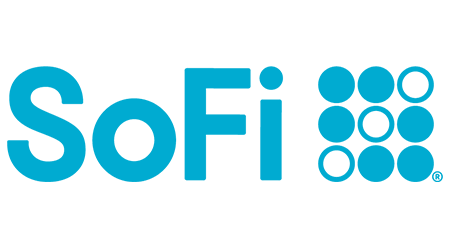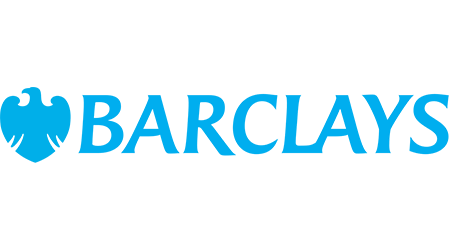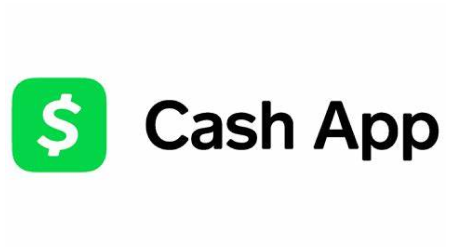
- Up to 4.60% APY on savings by meeting deposit requirements
- $0 monthly or overdraft fees
- Get a $300 bonus with direct deposits of $5,000 or more
A savings account offers interest rates to keep your balance growing, as well as minimal fees. Most savings accounts also limit the number of transactions you can conduct each statement cycle. We rolled up our sleeves to review and rate nearly 100 savings accounts to help you compare what’s out there.
These accounts feature market-leading APYs, few fees and little to no minimum deposit requirements.



A savings account is a bank account where you can safely store your money. Savings accounts are federally insured up to $250,000, which means you’ll get your money back in the rare event your financial institution goes under. But they’re more restrictive than checking accounts. You typically don’t get an ATM card or checks and you can’t make more than six outgoing transactions a month due to federal regulation.
The biggest advantage of savings accounts is that they earn interest — often presented as an annual percentage yield (APY). The current national savings account interest rate is 0.46%, according to the FDIC. But you can find high-yield savings accounts or online savings accounts offering rates as high as 5.00%.
Assuming that interest on your savings compounds daily, you can calculate the amount you’ll earn each day by dividing your APY by 365 then multiplying the result by the balance in the account. Most savings accounts do accrue interest daily, though they credit the earnings to your account monthly. You can use a savings calculator to estimate how much you’ll earn based on the account’s advertised APY.
This interactive table lets calculate the amount of interest you could earn with each account. Type your initial and monthly deposit amounts into the table and click “Calculate.”
You’ve likely heard of traditional savings accounts, but there are actually many more places you can store and grow your savings.
Most banks, credit unions and fintech companies offer traditional and high-yield savings accounts. As deposit accounts, they’re insured for up to $250,000 through the NCUA or FDIC. The average savings account rate is 0.46% APY, but you can find high-yield options well into the 5% APY range.
These accounts are often paired with checking accounts, and can be great for a no-fuss way to store and grow your money. However, most savings accounts only allow for up to six transactions per month.
A money market savings account (MMA) combines the best parts of a savings and a checking account into one. You’ll earn interest on your money like a savings account, and you typically get a debit card and checkwriting privileges like you would with a checking account. And like checking and savings accounts, MMAs are deposit accounts so they’re insured.
Just plan on needing to meet a deposit requirement, which may be anywhere from $100 to $1,000, and there may also be monthly fees, and they may come with transaction limits.
Certificates of deposit — or CDs — are insured deposit accounts that lock your funds for a term to earn a guaranteed return. CDs usually have higher rates than savings accounts, with the top CDs offering rates around 3% to 5% APY. The average rate on a one-month CD is 0.20% APY, and a 60-month CD has an average rate of 1.37%.
Just know that if you withdraw your funds early, there are penalties, such as a fee or forfeiting some or all of the interest you’ve earned.
Cash management accounts are often offered by brokerage firms, and they’re not typical bank accounts. They often require you to also have a brokerage account so you can easily move uninvested funds into it for easy access. Some even allow you to earn interest, and money held in the account is often FDIC-insured through partnering banks. Some cash management accounts come with a debit card and checkwriting privileges, but others aren’t designed for everyday spending.
There are specific savings accounts made for certain demographics, such as:
Traditional and online savings accounts are both all designed to help you save money, but there are some key differences to keep in mind.
| High APY | Few fees | Branch access | ATM access | Federally insured | Cash deposits | |
|---|---|---|---|---|---|---|
| Traditional savings | No | No | Yes | Sometimes | Yes | Yes |
| Online savings | Typically | Yes | No | Sometimes | Yes | Sometimes |
Follow these steps when you’re looking to open a savings account.
Most banks don’t require you to open a checking account before opening a savings account, especially online banks. But some digital banks like Chime or Varo require you to open their checking account before you have access to their savings.
Opening a savings account won’t affect your credit score because unlike a loan or credit card, you’re not applying for credit.
However, the bank may pull a report from ChexSystems, an organization that keeps tabs on your banking history. If you regularly overdraft your account, that information might show up on your ChexSystems report. Other information that shows up on your ChexSystems report include:
There isn’t a set number of savings accounts you should have. It’s completely up to you. But if you’re coming close to your bank’s $250,000 FDIC coverage limit, you’ll want to find another bank to open an additional savings account.
Aside from this, some people like opening up a separate savings account for every savings goal, so they’re not tempted to spend the money on other things. Others are comfortable keeping all their money in one place. You may also consider keeping a separate one for you and another one under a joint savings account with your spouse. Do what works best for you.
Some savings accounts — such as Ally Online Savings — let you divide your money out into different categories, so you can visualize your progress toward each goal without having to manage multiple savings accounts.

Diversify your savings if you have a lot of cash
If you have a lot of money saved up and you’re not sure where to put it, consider diversifying it. Place a portion of your money in a high-yield savings account, providing easy access for emergencies and short-term goals like an upcoming vacation or purchase. You can then allocate another portion to another account, like a CD, which allows you to lock your money away for a fixed period while earning a competitive rate. This strategy enables you to balance accessibility and growth based on your financial needs and objectives.
— Alexa Serrano Cruz, CAMS, Senior Editor, Personal Finance.
Yes, savings accounts are useful tools to help you save. Your money is safe, protected, easily accessible and effortlessly works for you by earning interest. Here are three signs it’s time to get a savings account:
A savings account can help you reach your goals by offering these benefits:
A savings account can help you tackle your financial goals with unique features, but there are also some limitations to be aware of.
When interest rates drop, the growth of your savings slows — and it can happen without you even knowing it. Your account’s terms and conditions often allow your bank to change your interest rate without notification. Learning how to predict these changes and find out if they affect your account can help you stay on top of your finances.
Banks are private businesses with the right to set and change interest rates as they please. However, these rate changes don’t come out of nowhere — the interest rate on your savings account usually fluctuates for three different reasons:
You may think your money is working as hard as possible, growing at the APY you signed on to when opening your account. But chances are good that the interest rate on your savings account has changed without your knowledge.
Banks are given a lot of freedom in how they operate — including the freedom to change your APY without notification.
The Truth in Savings Act doesn’t require banks to notify customers of interest rate changes on variable-rate accounts. Rather, you may notice it down the line on, say, a bank account statement reflecting the adjusted rate.
About 1 in 5 Americans (21%) say they don’t save any money each month, while 18% say they’re putting away less than $100.
A savings account is one of many tools you can leverage to reach your financial goals. They include everyday savings accounts offering low fixed interest to high-interest money market accounts that offer limited checks. For each, the earlier you start saving, the more time your money has to grow.
Each type of savings account is designed to serve a different financial need. And with so many options at your disposal, weigh the benefits and drawbacks of each option to find the best fit for you. If you know what features you’re looking for, check out the top 10 lists we’ve put together in our guide to the best savings accounts.
Apple’s new savings account has a high APY and simple set up, rivaling top competitors.
The Ponce Bank high-yield money market account offers 5.28% APY and comes with no account fee and a low $1 minimum opening deposit.
Here’s how we rate popular savings accounts, covering what we look for in interest rates, fees, minimums, customer service and account features.
Emergency funds can be a huge relief when an unexpected bill pops up. Learn more about how to build and where to put your emergency fund.
Top-rated savings accounts to save for a Disney vacation.
The banks that offer the best vacation and travel savings accounts are SoFi, UFB, Upgrade, Bread, Bask, Varo, Marcus, Barclays and more.
If you struggle to save, you could benefit from a savings account or CD that won’t allow you to withdraw funds.
A compound interest account reinvests your earned interest into your balance. This new balance then continues to earn interest, knowing as compounding.
How to choose the best savings account for your situation.
Some of the top banks with the highest interest rates are Customers Bank, TAB Bank, Cloud, UFB, Bread, Bask, Upgrade, Varo and more.
Hello! I have a question about a kind of flexible time frame for a locked savings account. I have a plan that I want to move across country, so I need to save, but sometimes I’m bad with money Haha. So I was curious if you knew of a bank that might include a possible locked savings plan similar to what I’m searching for. Or what I could work with best. Thank you!
Hi Lettie,
Thanks for getting in touch!
It’s great to hear that you have all your savings plans laid out. If you need savings to an account you can’t touch, then a savings account with no ATM access may be suitable for you.
As a friendly reminder, review the eligibility criteria as well as the account terms and conditions before applying and making a decision on whether it is right for you.
Hope this helps!
Best,
Nikki